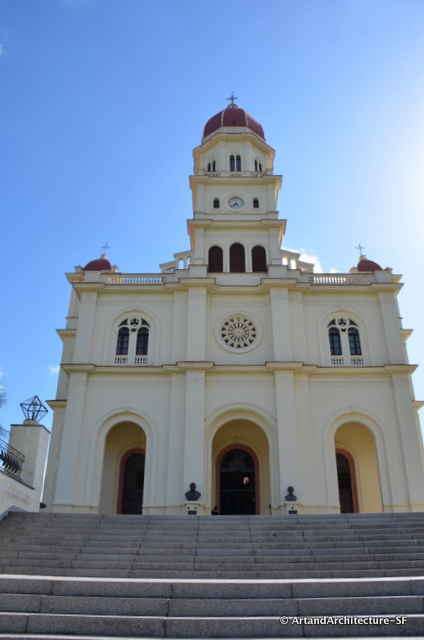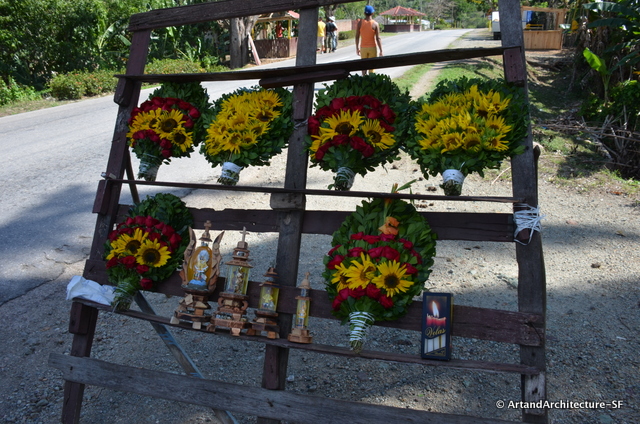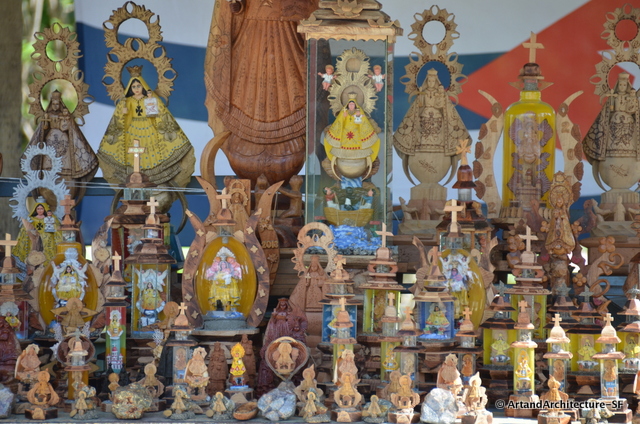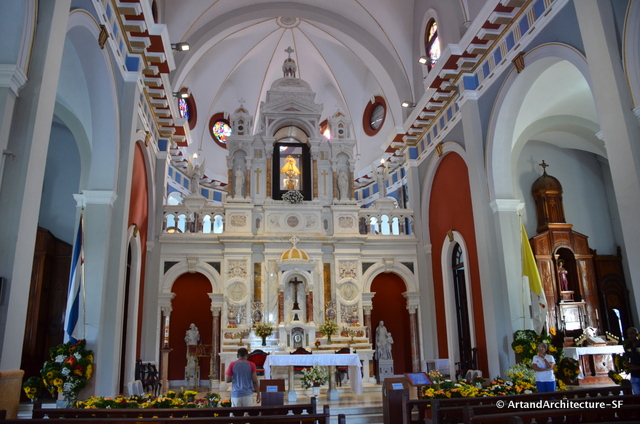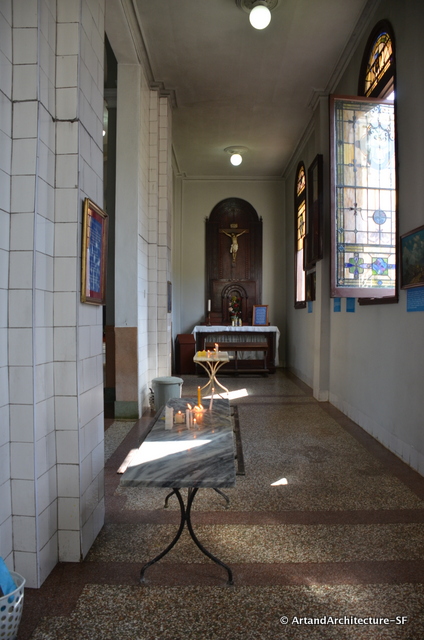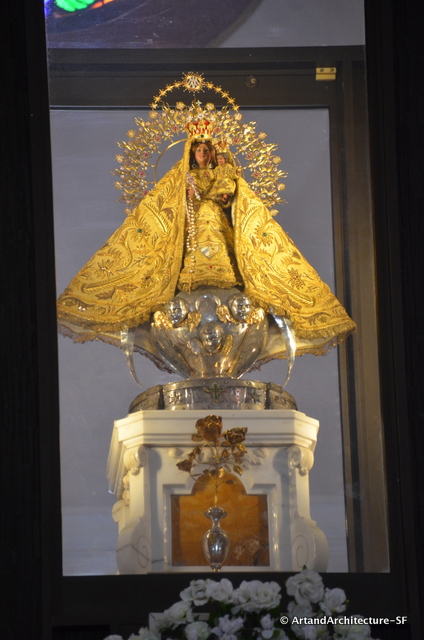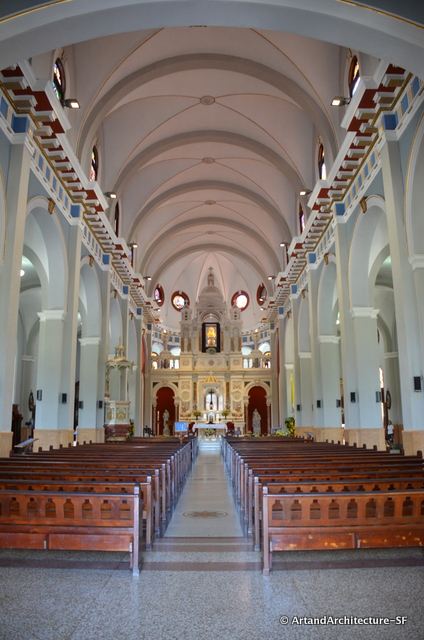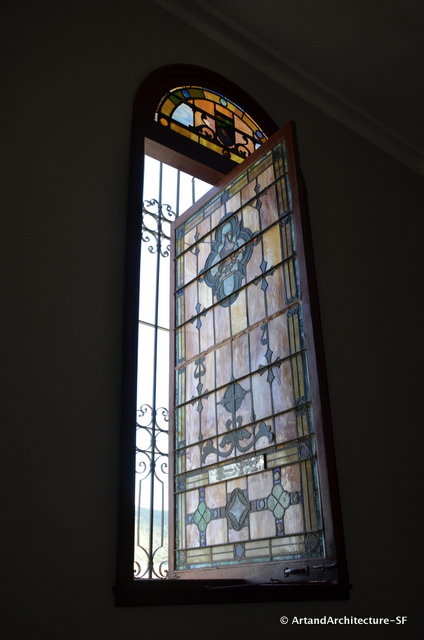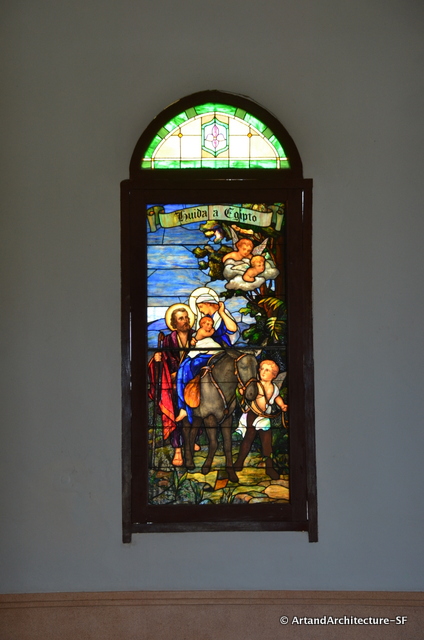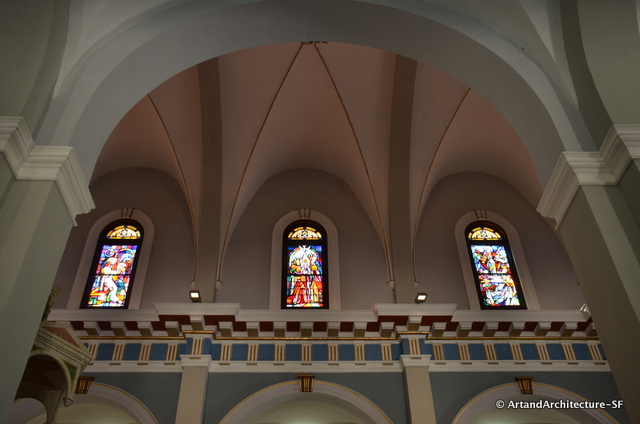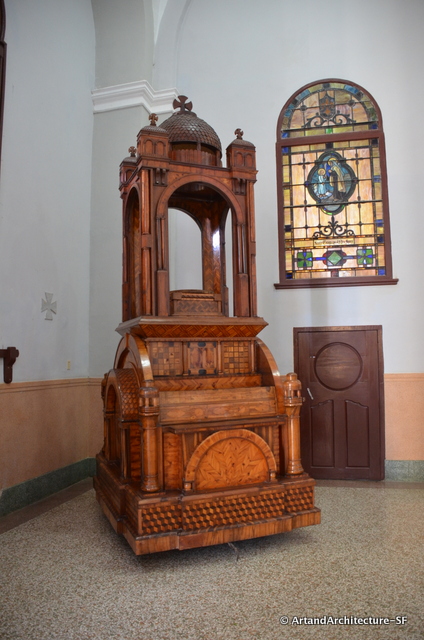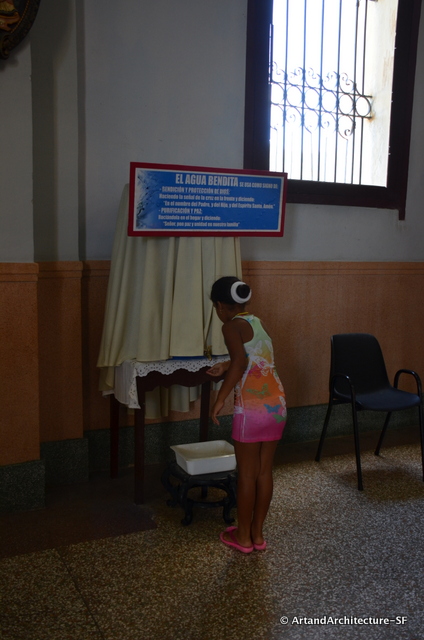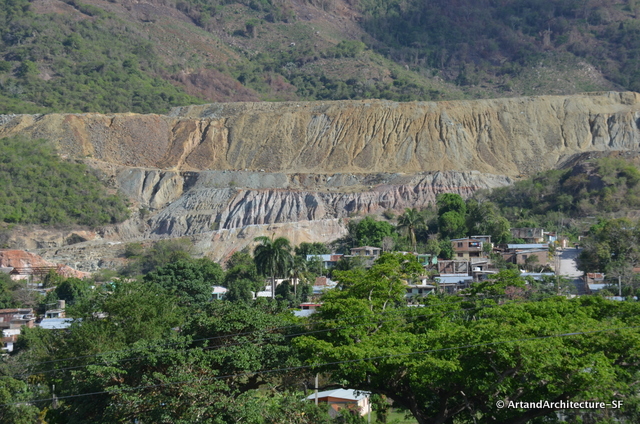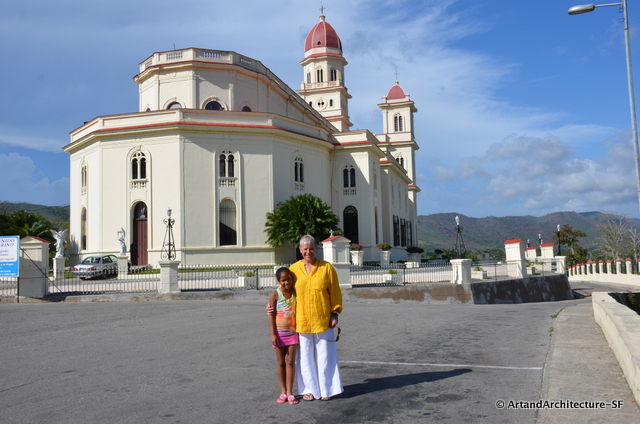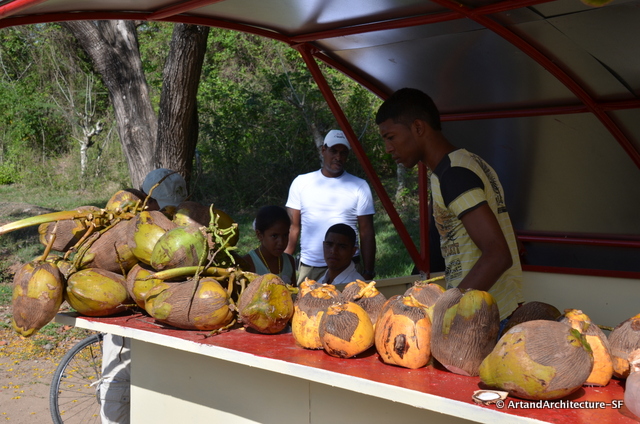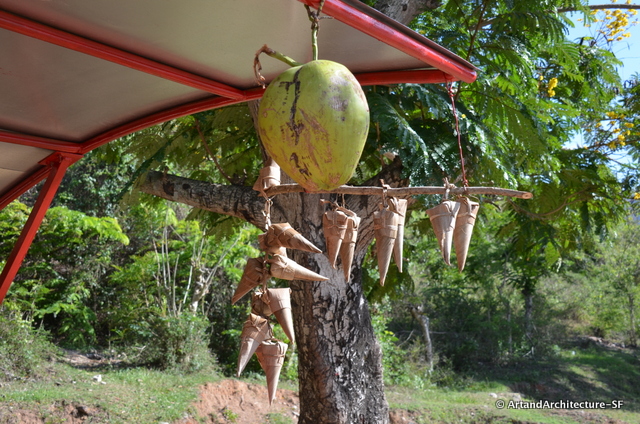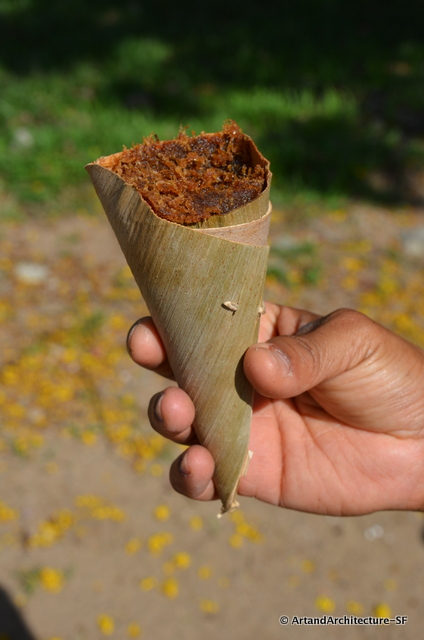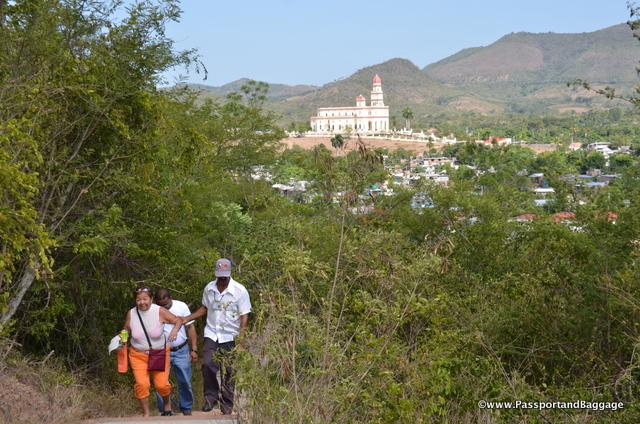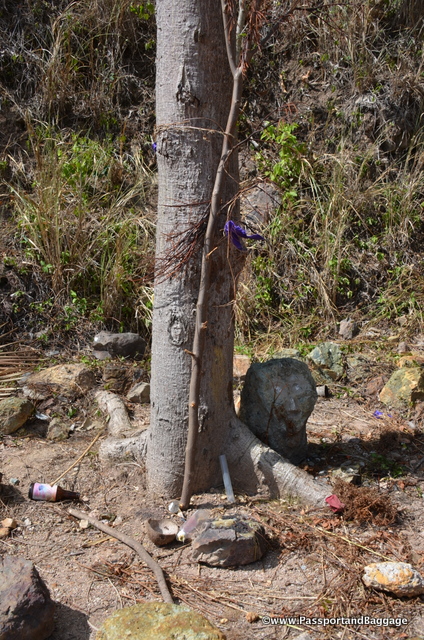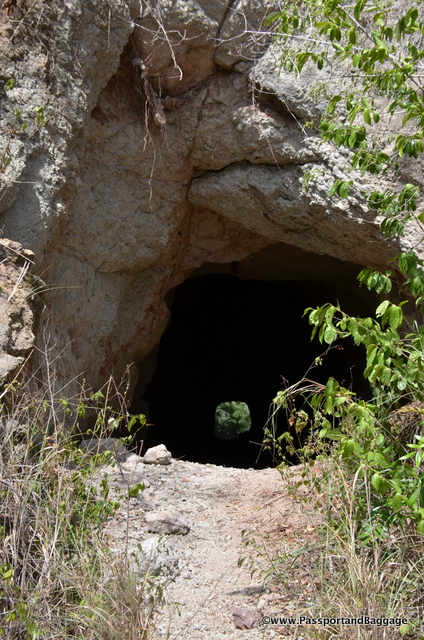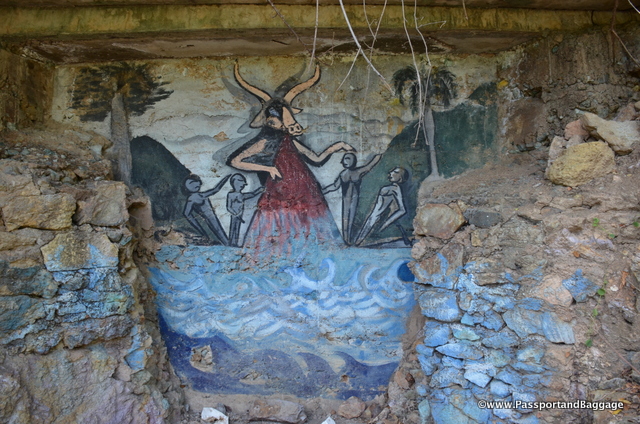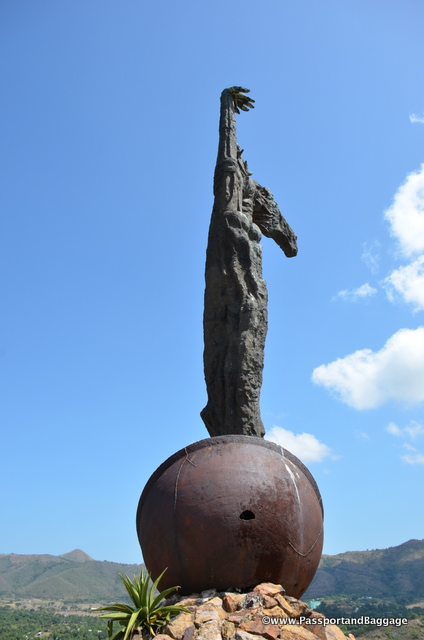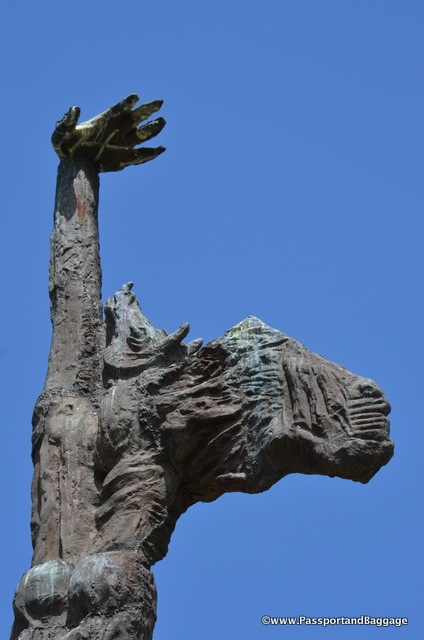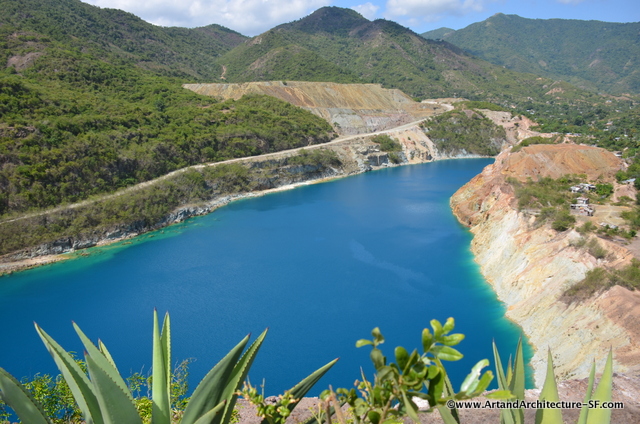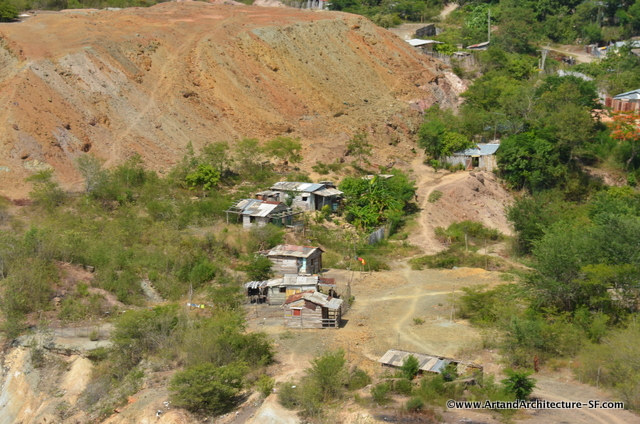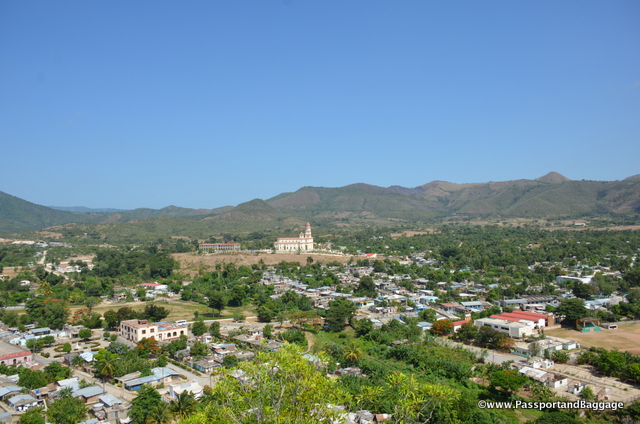This is El Cobre, a church with a colorful history and a stunning interior. Built in 1926, El Cobre lies about 12 miles outside of Santiago de Cuba.
A focus of intese popular devotion—not just for Catholics but also for followers of Santería and even those who aren’t otherwise religious—the beloved Virgin of Charity was declared the patron saint of Cuba by the pope in 1916.
On the road to the town of El Cobre, before visiting the shrine, you are given the opportunity to purchase flowers, candles and personal shrines. We purchased both flowers and candles.
As you can see, the church is well adorned with flowers from visitors.
The side aisles serve as a place to offer candles and there are framed prayers above the tables if you need prompting.
The history of the shrine is linked to a legend that has changed with the passage of time.
One day in 1608, two Indians and a slave boy (often told as a white, a mulatto and a black) were gathering salt on the coast near El Cobre when they saw something floating in the water. It was a small statue of the Virgin Mary, carrying the Christ child and a gold cross. She floated on a board bearing the inscription, Yo soy la Virgen de la Caridad, “I am the Virgin of Charity.”
Offerings are kept in the Chapel of Miracles, including Ernest Hemingway’s medal for his 1954 literature Nobel Prize, which he donated to the Virgin. Common objects left in more recent times include replicas of rafts, representing safe journeys to America.
There are beautiful stained glass windows everywhere.
This stunning wood mechanism is used to transport the Virgin through town on important holidays.
There is a dispenser for you to fill your container with Holy water to take home.
The town of El Cobre was founded in 1550 as a Spanish copper mine, worked by slaves and Indians. It was at its peak in the first half of the 19th century, when it produced 67,000 tons of copper. In 2001, scant production and low prices for copper on the world market led to the mine’s closure.
We stopped for coconut water and cucurucho on our return trip. Cucurucho is a delicacy of the city of Baracoa east of Santiago. Wrapped in a cone-shaped palm leaf (cucurucho is Spanish for cone), it is a mix of coconut, sugar and often other ingredients such as orange, guava and pineapple.
*
